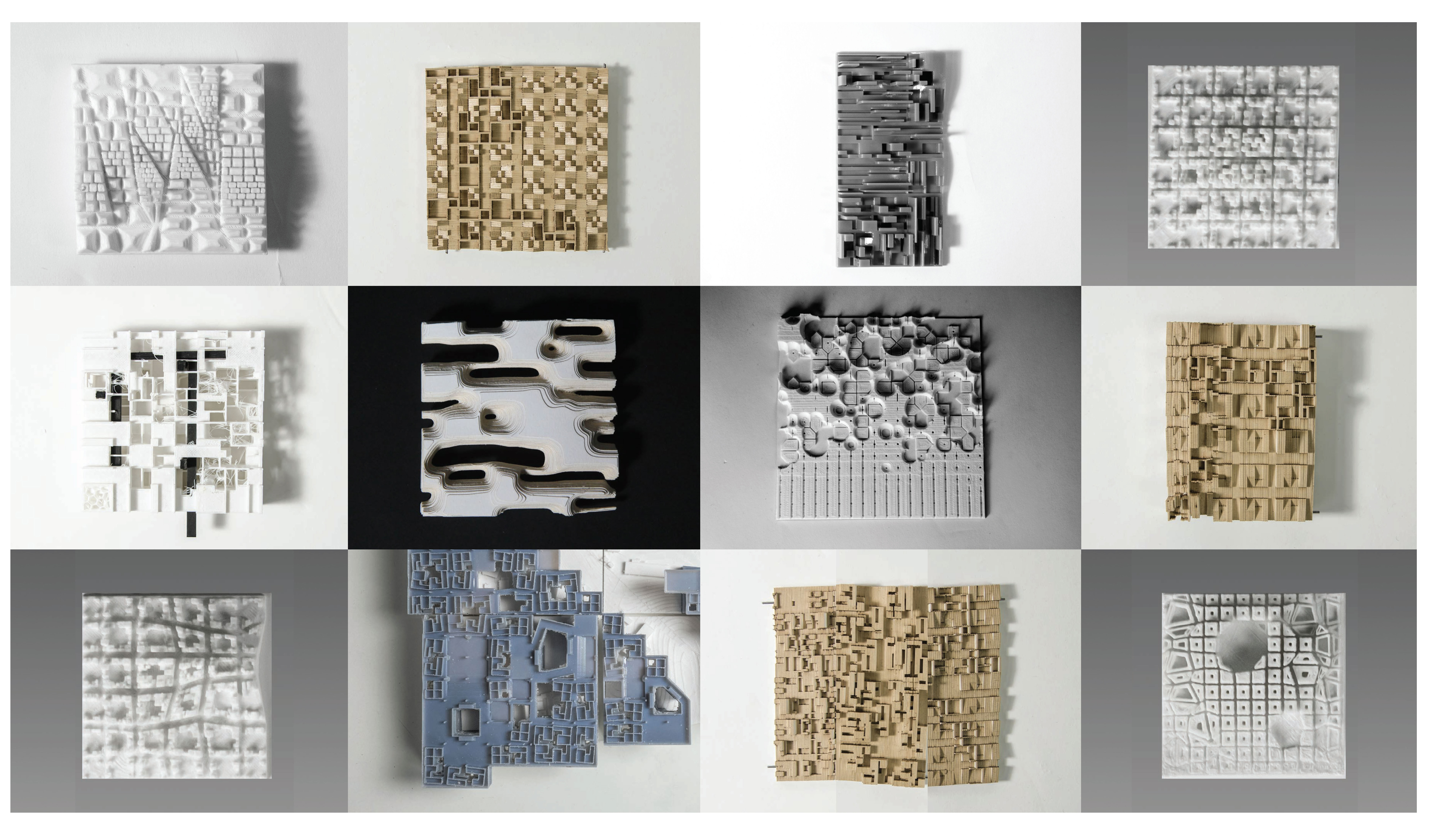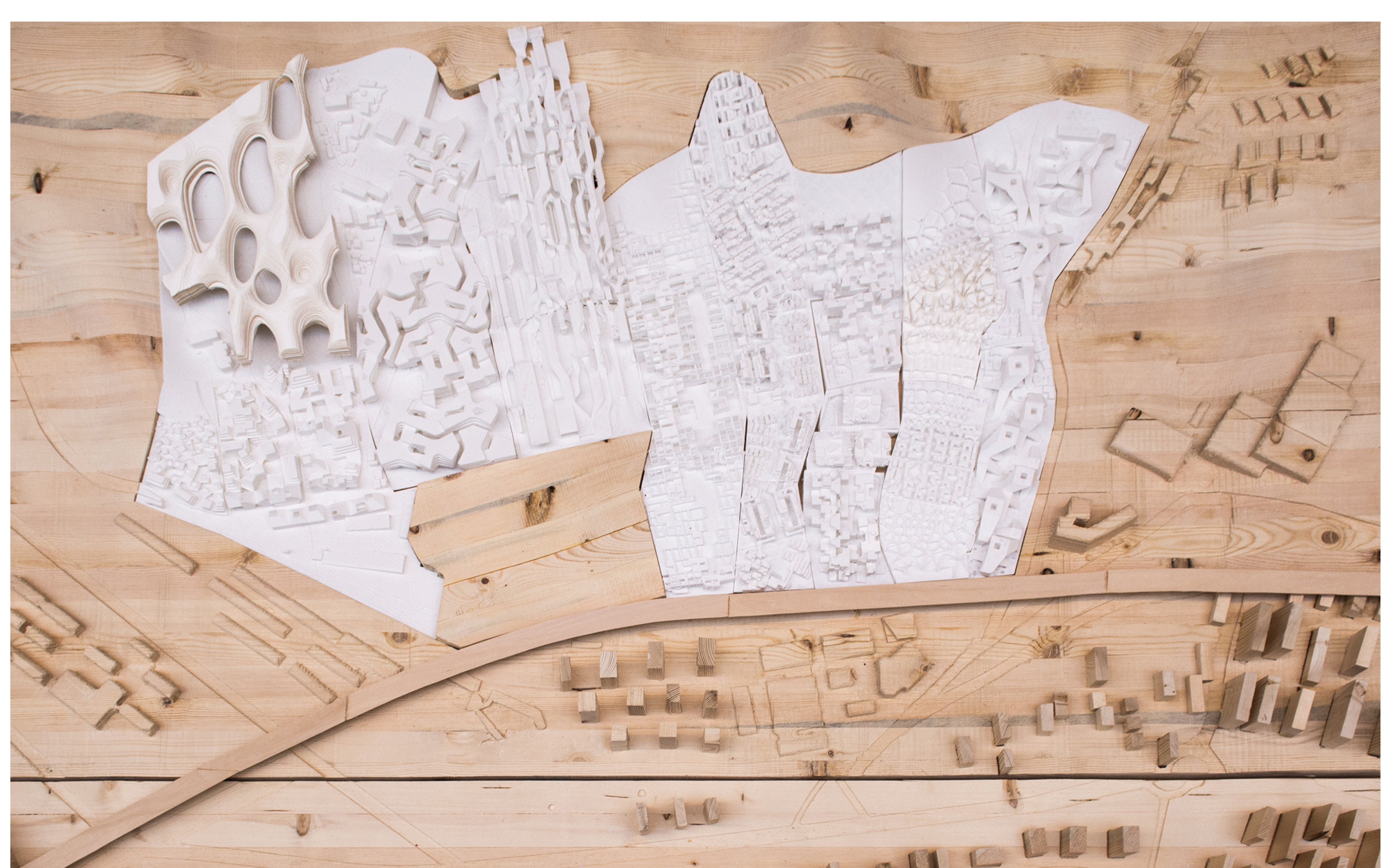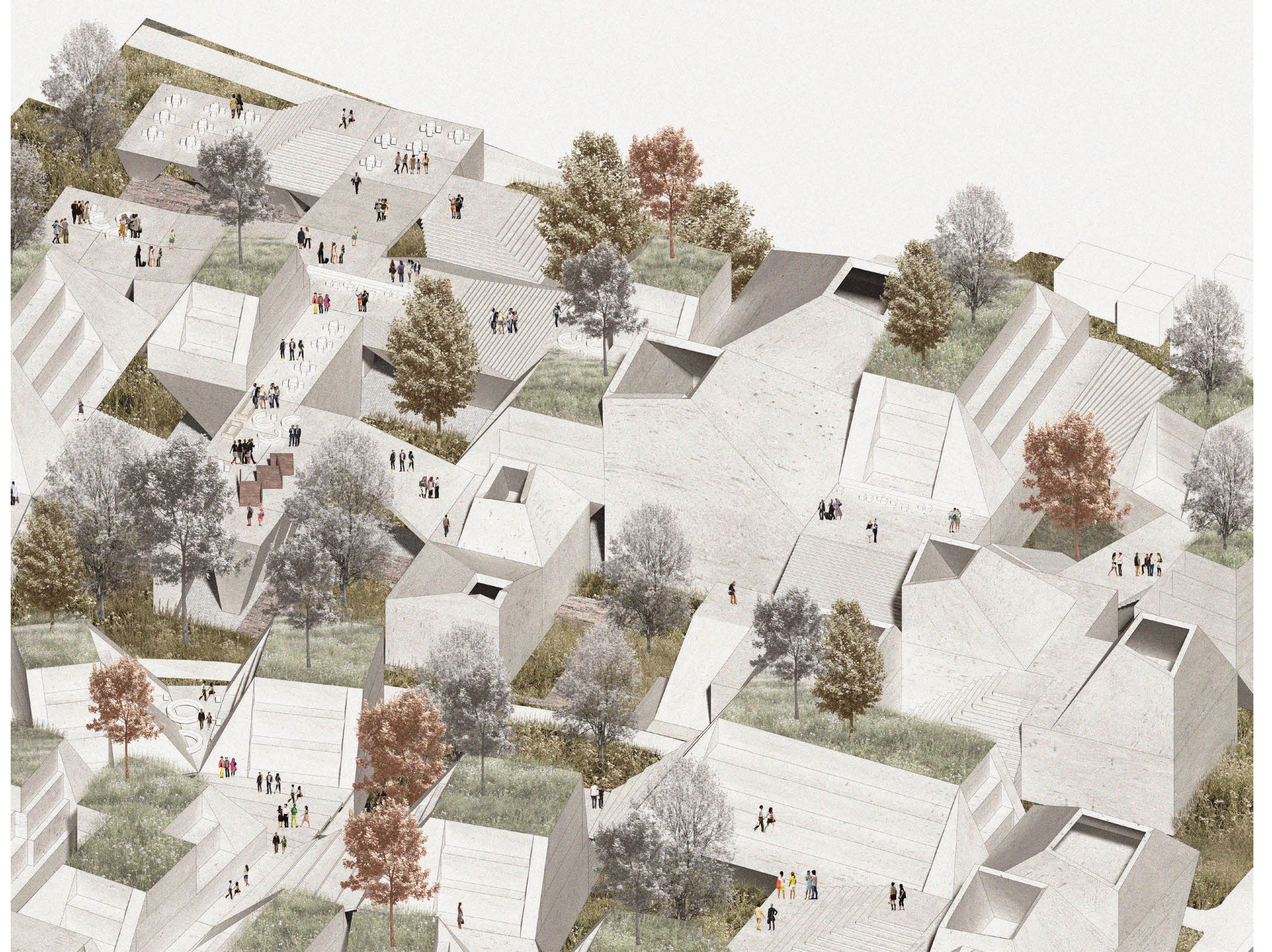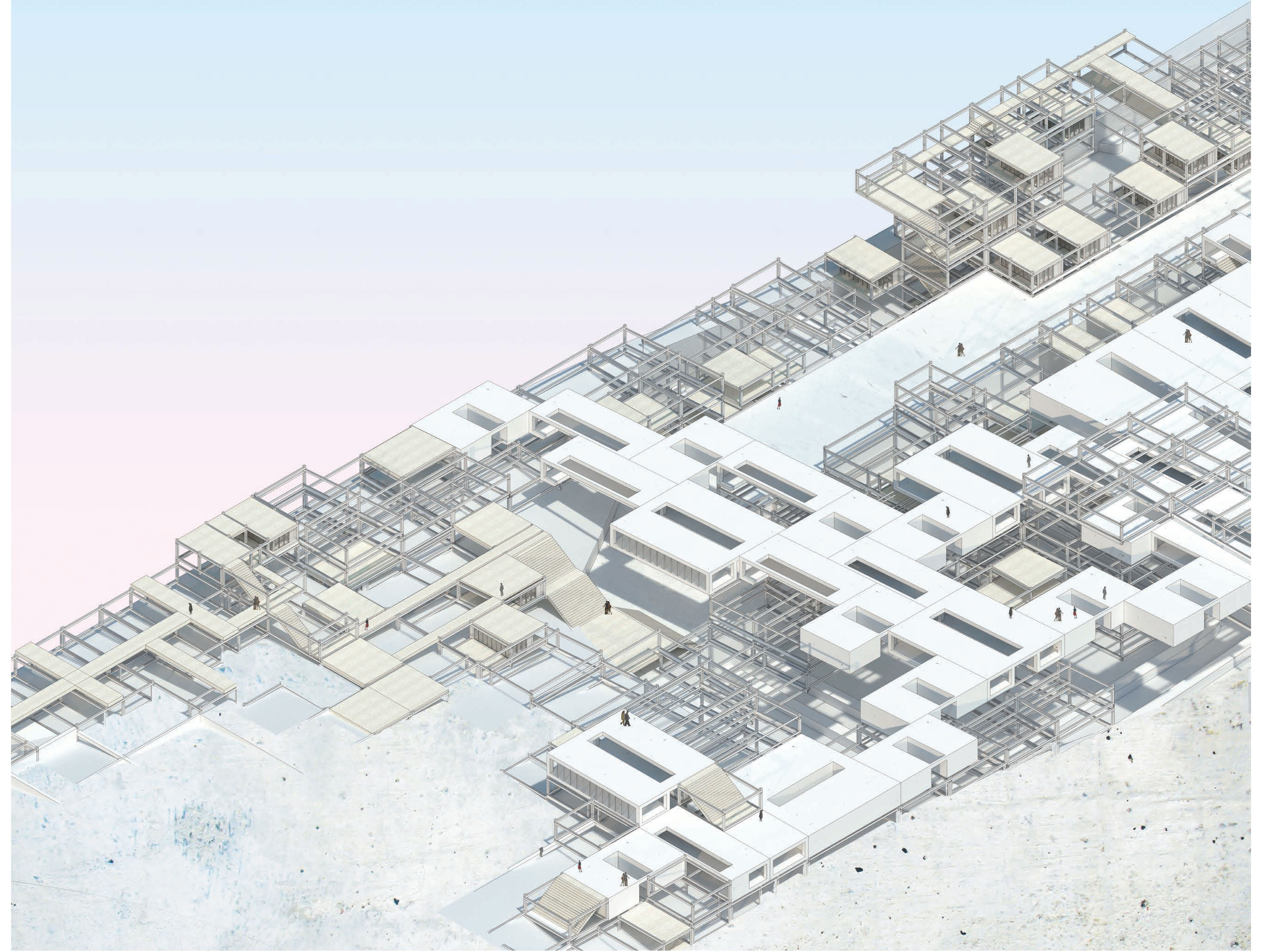FABRIC URBANISM: Strategies for Urban Mat-Housing and Fabricatio
Fall 2016
Negotiating between scales of architecture, infrastructure, and urban landscape, the studio seeks to develop concepts of mat-organization in order to speculate about, identify, construct, and design alternate modes of housing in systems of urban fabric. In contrary to the unvarying modernist residential towers arrayed in contemporary Chinese urbanized cityscapes, fabric presents opportunities for interconnected organizations of circulation, program, massing, and infrastructure. In her seminal essay How to Recognize and Read Mat-Building from 1974, Alison Smithson described mat-buildings as "close-knit patterns of neutral collectives open to growth and changes" analogous to urban formations characterized by an interplay of horizontal part to whole relationships in an ever malleable city fabric. The studio is interested in re-visiting fabric as an architectural and urban strategy, allowing for the development of high-density, mid-rise, mixed-use, and close-knit mat housing systems.
This studio investigates the organization of mid-rise, high-density building types and city fabric. Capable of housing complex spatial configurations and maintaining a bias towards the horizontal connections, this type of mat urbanism re-offers urban relationships and adjacencies absent in most contemporary landscapes of residential towers but formerly present in the Chinese city.To explore mat building systems in an expanded scale and context to address form and morphology, organizational strategies cannot be seen as isolated from strategies of making. Specific material systems and industrial scale digital fabrication methods will be investigated and expanded upon to advance large scale building construction processes. The studio will tie urban morphological studies to material research in wood, concrete, and steel and explore fabrication methods such as CNC-milling, precast concrete, laser cutting, cast iron, and 3d-printing among others. Iterative testing and making, analysis of precedents, conducting material studies, and integration of digital design processes are imperative to the studio’s design and research process. Introductory workshops to familiarize students with necessary software and fabrication tools will be given throughout the semester.


AUTOLITH
Project by: Jessica Jiang

LATTICE WORK
Project by: Evan Rawn

MATT GESTALT
Project by: Shinning Sun



